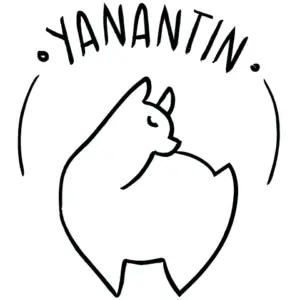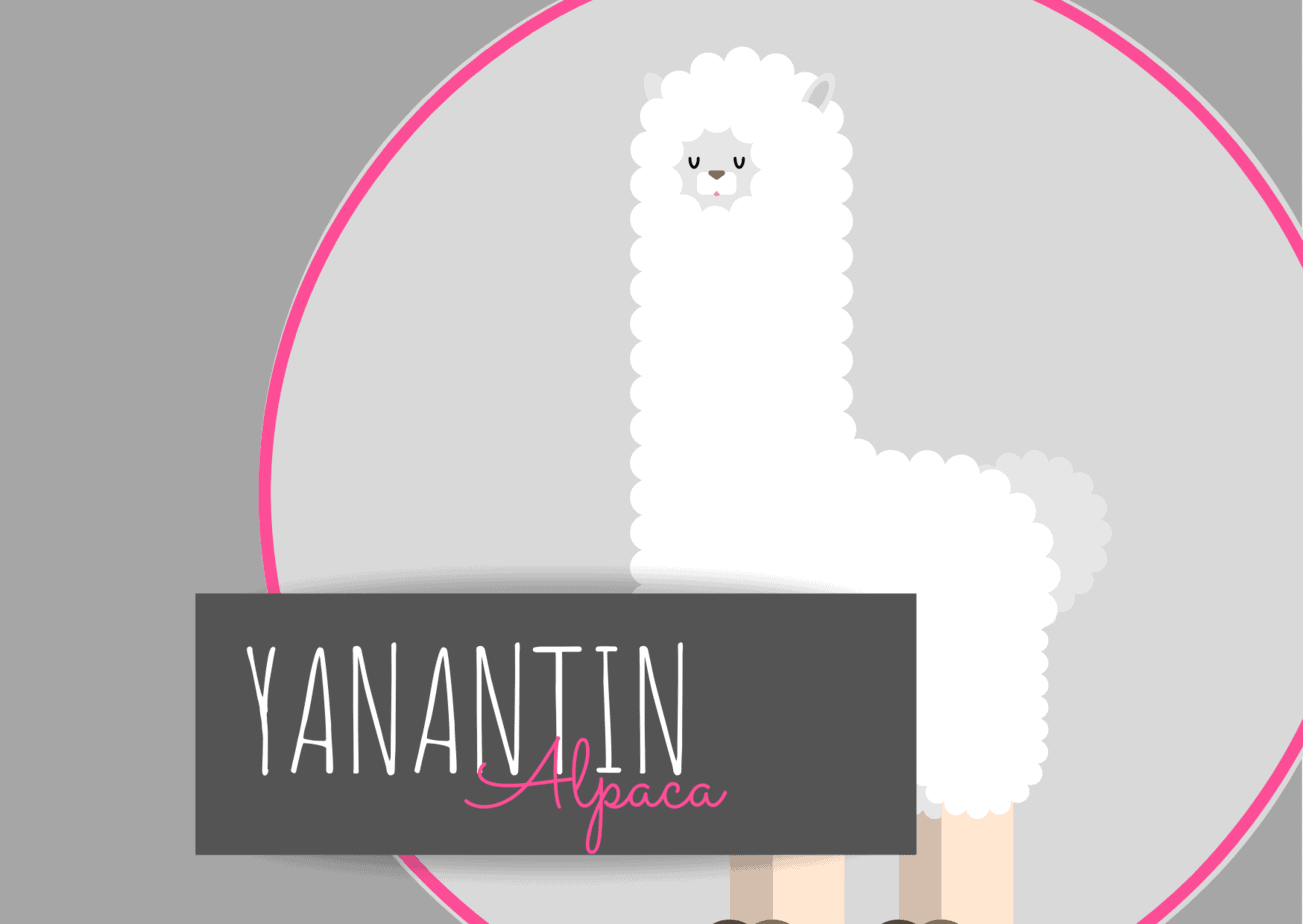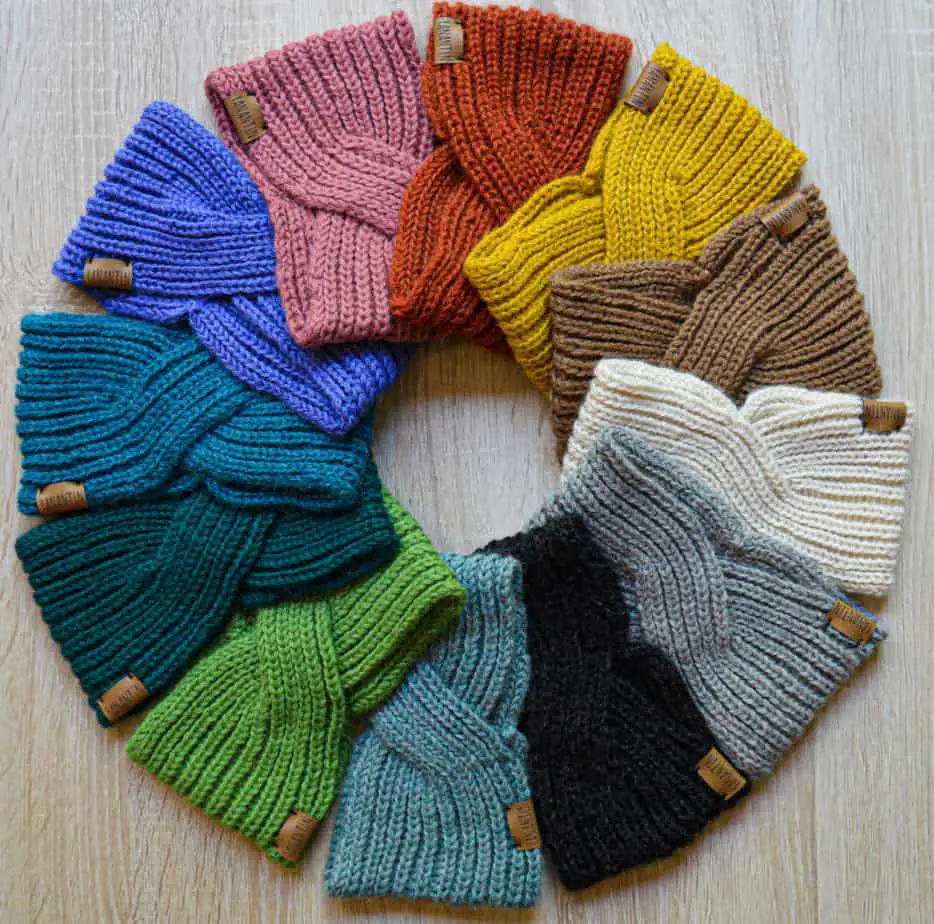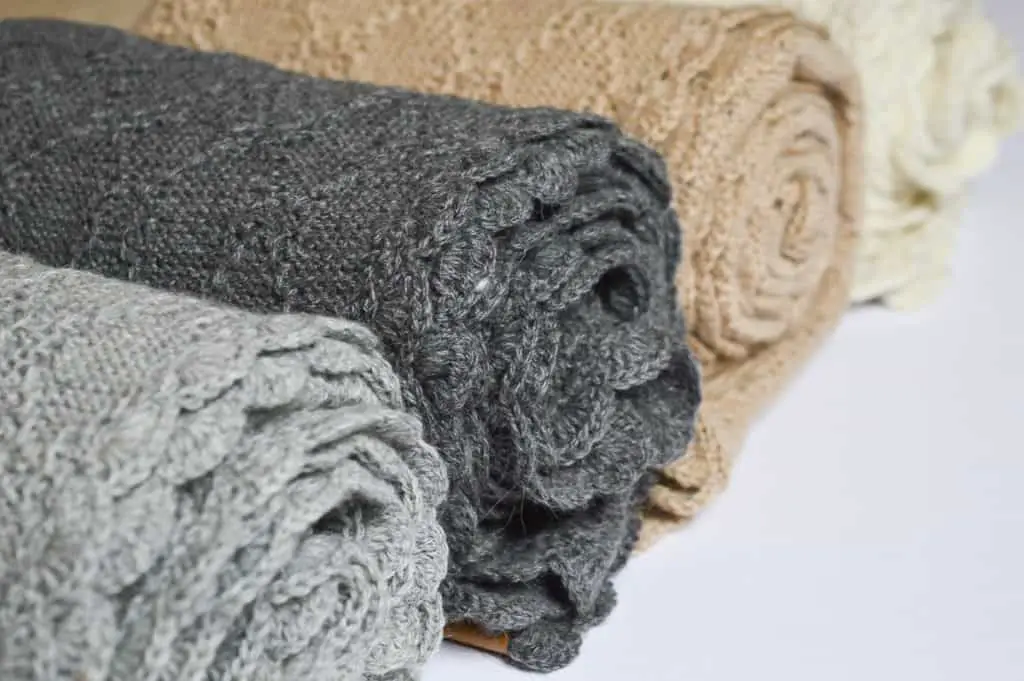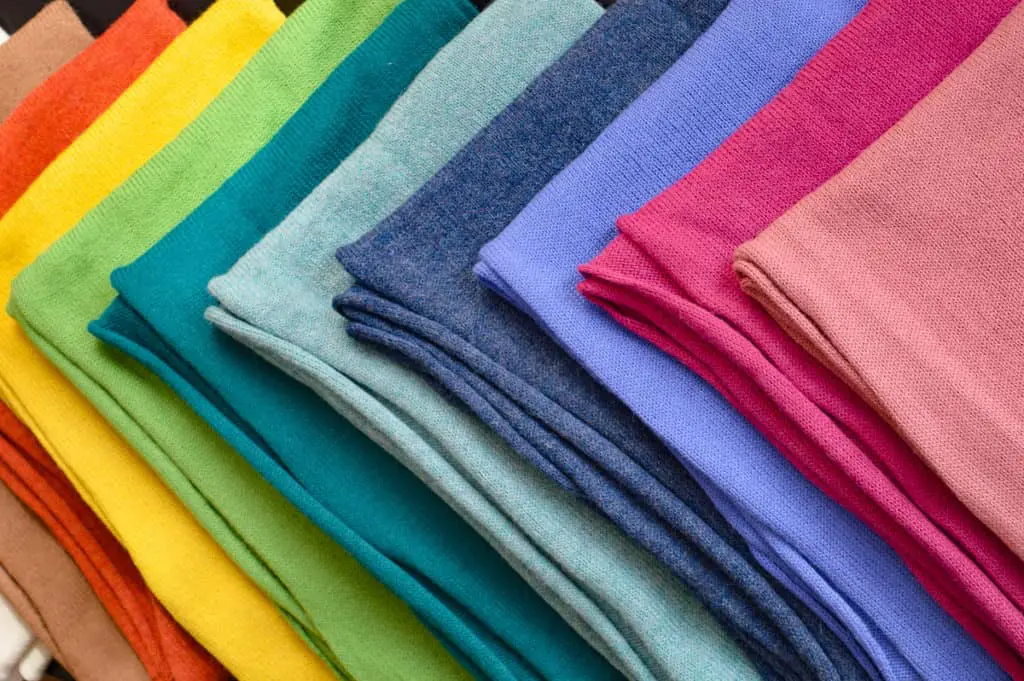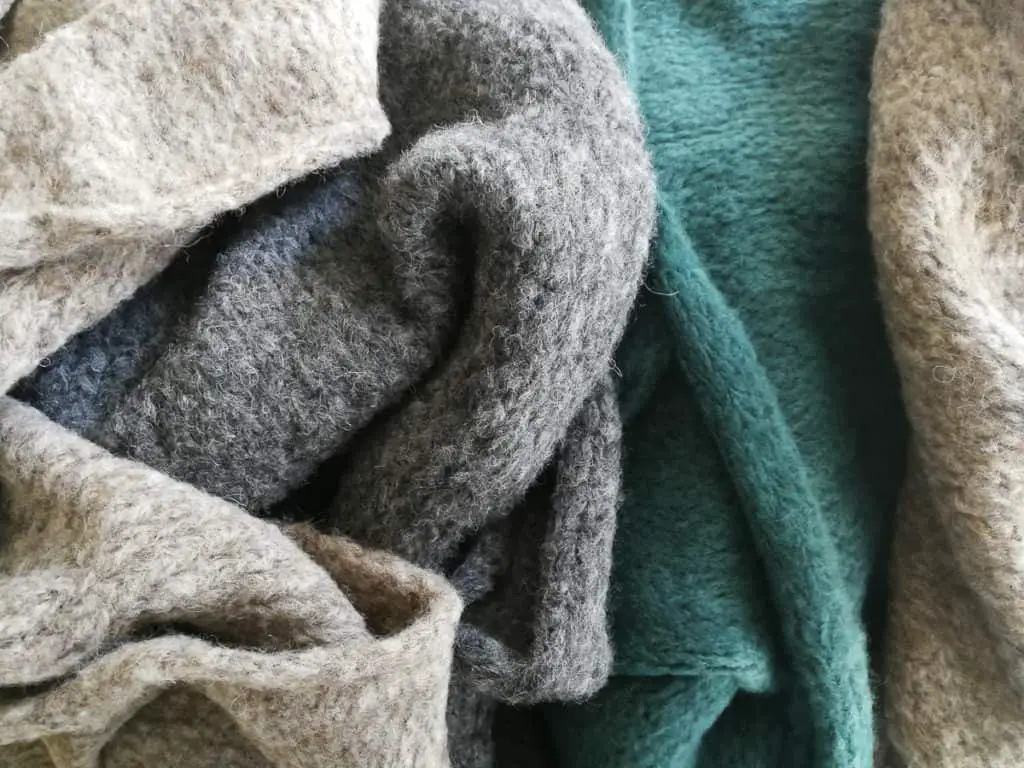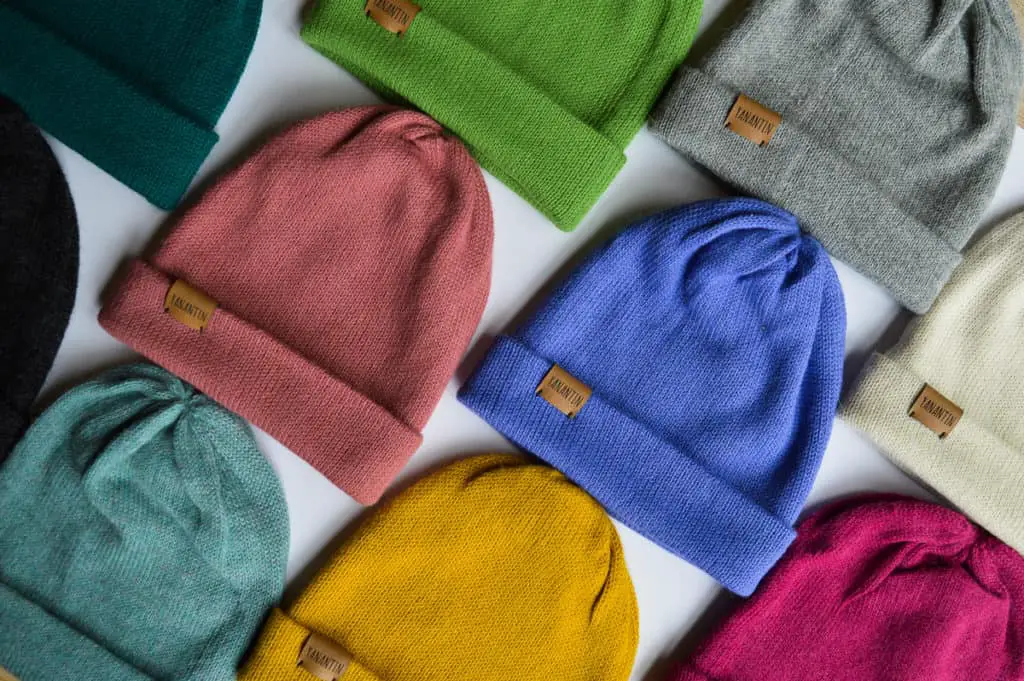If you want to make your wardrobe more sustainable, one of the important changes to make is to buy less clothes. And when you do buy clothes, you better choose for sustainable fabrics. However, in order to schedule your wardrobe-planning best, you need to know when you can wear which materials.
So, an important question is, which fabrics should you wear and when?
(Fabrics in the chart are organized from multiple purposes to more specific uses)
| cheap Misoprostol online no prescription Fabric | Haridwar Season | Occasion / Purpose |
|---|---|---|
| Organic Cotton | Summer Year-round | Basics Base-layers & underwear Pajamas |
| Alpaca Wool | Winter Year-round | Knitted garments Accessories Hiking gear |
| Hemp | Year-round | Jackets, pants, skirts, dresses Sweaters, T-shirts Basics Base-layers & underwear |
| Responsible Mohair | Winter In-between seasons | Knitted garments Suits Hats Coats |
| Organic Linen | Summer | Tops, T-shirts, dresses, skirts |
| Organic Wool | Winter | Knitted garments Accessories Hiking gear |
| Organic Denim | In-between seasons | Jeans Jackets |
| Organic Merino Wool | Winter | Accessories Hiking gear Thermal underwear |
| Responsible Yak | Winter | Knitted garments Accessories Hiking gear |
| Peace Silk | Summer Year-round | Blouses, dresses, tops Night out Formal clothing Pajamas Underwear |
| Jersey (Wool or Cotton) | Summer In-between seasons | Sweaters, sweatpants T-shirts Polo shirts Draped garments Sportswear |
| Responsible Cashmere | Winter | Knitted garments Accessories Coats Suits |
| Responsible Angora | Winter | Knitted garments Accessories |
| Responsible Bison Down | (Extremely cold) winter | Knitted garments Accessories Hiking gear Jackets (with down) |
| Responsible Qiviut | (Extremely cold) winter | Knitted garments Accessories |
| Cruelty-free Leather | In-between seasons | Jackets Pants Dresses Shoes |
| Cruelty-free Suede | In-between seasons | Jackets Dresses Shoes |
| Recycled Polyester | Year-round | Active wear |
| Sustainable Rayon | Summer | Dresses, shirts Active wear |
| Chambray (Linen or Cotton) | Summer | Dresses, jumpsuits, pants |
| Flannel (Wool or Cotton) | Winter | Outdoor activities Shirts Winter pajamas |
| Tweed (Organic wool) | Winter | Formal clothing |
| Satin (Silk) | Summer | Night out Underwear |
| Velvet (Silk) and Velours (Cotton) | Winter Fall | Playful party-outfits |
| Corduroy and Chenille (Cotton) | Winter Fall | Trousers Shirts, dresses Jackets |
| Cork leather | Year-round | Bags |
| Piñatex | Year-round | Shoes |
| Canvas (Cotton) | Summer | Sneakers |
1. Organic Cotton
The basic of all basics: organic cotton should be a staple fabric in every wardrobe.
Cotton can be worn year-round and is one of those fabrics that is also very comfortable to wear in summer. It is a lightweight fabric that, when made organically, is durable and strong. Cotton is most often used for basics (shirts and tops), base-layers and underwear.
Cotton garments are breathable, which makes them perfect for base-layers and underwear. Pajamas made of cotton are also incredibly comfortable to sleep in, as they keep you cool, yet warm and dry as they are moisture-absorbent.
In summer, use cotton for:
- T-shirts
- Tops
- Dresses
- Shirts
The rest of the year, wear the following garments made of cotton:
- Sweaters
- Knitted sweaters
- Base-layers
- Leggings
- Socks
- Underwear
- Pajamas
2. Alpaca Wool
Alpaca wool is one of those other basics that can be a staple material in your wardrobe.
Alpaca wool is versatile as it is warm, yet cooling, breathable, thermoregulating and water-repellent. This means that you can wear alpaca wool in many different environments (rain, wind, sun) and do many different activities wearing alpaca woolen garments (from hiking to fine dining).
Everyone needs a sweater, right? But if you have an alpaca woolen sweater, you will probably find yourself wearing it much more often than you thought!
- While alpaca woolen garments are generally worn in winter, they can actually be worn year-round.
The breathable fiber maintains a constant temperature which makes alpaca woolen garments comfortable to wear. When the outside temperature and/or the body temperature rise, the fabric will absorb the sweat, evaporate it and the body temperature will decrease.
You can wear alpaca wool in different styles:
- Knitted garments
- Sweaters
- Ponchos
- Ruanas
- Cardigans
- Dresses
- Tops
- Accessories
- Hats
- Scarves
- Headbands
- Shawls
- Stoles
- Felted garments
- Hats
- Hiking gear
- Sweaters
- Hoodies
- Balaclavas
- Neckwarmers
- Socks
- Sleeping socks
- Hiking socks
- Dress socks
On top of that, alpaca wool dresses beautifully and its silky texture makes for exclusive garments. This means that you can also wear an alpaca woolen garment to a fancy occasion!
Check out the different alpaca woolen garments in the Yanantin Alpaca store! All items are made to empower women in Bolivia <3
3. Hemp
Hemp is very similar to cotton, and despite its “recent” arrival (it’s actually really old!) to the fashion industry, it is becoming increasingly popular. Part of that are its sustainable features. Another explanation is that hemp can be worn comfortably year-round.
Hemp clothing can be worn year-round. Hemp is often used for “normal clothing” like sweaters and T-shirts, but also for thicker woven fabrics (more like denim), such as jackets, pants, skirts and dresses. It is also great for basics, base-layers and underwear.
Hemp is incredibly versatile and you will find many different uses of it. According to The Hemp Shop it is warmer than cotton, which means that you can comfortably wear it in winter, too (whereas cotton might not be warm enough on really cold days).
The hemp-market is still expanding, but so far you will the following garments made of hemp:
- Jackets
- Pants
- Skirts
- Dresses
- Dungarees
- Sweaters
- T-shirts
- Basics
- Base-Layers
- Underwear
- Sportswear (to a small degree)
4. Responsible Mohair
While you might not think of mohair as a very common material, it definitely has the potential to be one!
Garments made with mohair are great for winter and in-between seasons. Because it is wool, most garments will be warm. But mohair can be woven into a lightweight fabric as well, while remaining breathable. It is perfect for luxurious suits, hats and accessories, but also for knitted garments.
Mohair is a luxury fiber that has a beautiful sheen and silky texture. It is often used for high-quality suits, and of the reasons as to why mohair is so well suited for suits (hihi), is because it is incredibly crease-resistant thanks to that silky fiber!
- You could travel to a different continent wearing a mohair suit, without getting sweaty and without getting your clothes wrinkled!
On the other hand, mohair can also be incredibly playful thanks to its fluffiness. You will often find knitted mohair sweaters using cute designs, with beautiful colors and funky patterns.
Look for the following garments made with mohair:
- Sweaters
- Cardigans
- Suits
- Coats
- Hats
5. Organic Linen
While organic linen is most beneficial for summer wear, it really is all you need!
Linen is perfect for summer-wear: it is breathable, soft on the skin, and highly absorbent (no sweat patches!). Linen is a woven fabric and is therefore incredibly versatile: you will find linen tops, shirts, dresses, dungarees, skirts, pants, and much more!
Being the perfect sustainable fiber, linen has become increasingly popular. You will find the cutest dresses, the most beautiful dress pants, and the comfiest shirts in all kinds of beautiful (pastel) colors.
Linen is a woven fabric: it is a strong and soft material that even gets softer over time. Once you buy a linen garment, you don’t have to worry about wear and tear, holes, stretching, losing its shape, or anything at all.
Although, there’s one thing: linen fabric wrinkles very easily and requires a lot of ironing – or a natural-creased-look: also really cool!
Linen fabrics can be used for the following garments:
- Dresses
- Skirts
- Pants
- Dungarees
- Tops
- Shirts
6. Organic Wool
Organic wool is an old-time favorite! Who doesn’t love chunky sweaters and fluffy hats?!
Organic wool is perfect for winter clothing. It is warm and breathable, (mostly) comfortable to wear and perfect for layering up. Wool is also slightly water repellent and therefore perfect for accessories to protect you from wind and rain. Woolen garments are often knitted, making them elastic.
Knitted sweaters are a must-have in cold climates. Knitted sweaters are great for layering and you can best wear them over a cotton layer (to protect the skin in case of scratchy wool) and for added warmth. With a wind and water resistant jacket on top of that, you’re ready to hit the road in some of the coldest environments.
Knitted garments are warm because they add extra room between the yarn where warmth can accumulate and keep the body super warm.
Those sweaters are also really strong, which means that all you have to do is invest in one awesome sweater that you can wear every day. Thanks to its breathability, wool doesn’t really absorb smells. Hurray!
Woolen garments are similarly strong and protective, depending on the pattern, design and yarn that is used.
- Super Tip: Look for sweaters that are made with wool from a specific area. You will often see special patterns, designs or techniques, and wool used from local sheep! Super special and supporting locals! 🙂
Look for the following woolen garments to add to your wardrobe:
- Sweaters
- Cardigans
- Hats
- Headbands
- Socks
- Scarves
7. Organic Denim
Denim is another one of those classic fabrics that you’ll always find a piece of in any wardrobe!
Being strong and resistant, denim garments are great for outdoor adventures. Originally designed for workers, denim clothing can handle high amounts of abrasion. Denim is perfect to wear in-between seasons, when it is not particularly cold, wet, or windy, nor sunny.
High quality denim is strong, thick and a bit stiff at first. It’s the type of fabric that you have to wear a few times before it gets comfortable, especially jeans! But once they get comfortable, they get super comfortable.
Denim is not great in hot weather – the fabric is simply too thick – so you want to avoid wearing jeans on hot sunny days.
Similarly, denim is also not very protective in rainy, windy, or cold weather. So, not great for winter either.
Denim, however, is perfect for springdays and fall afternoons!
Look for the following garments:
- Jeans
- Shorts
- Skirts
- Jackets
- Shirts
- Work wear
- Dungarees
- Dungaree-dresses
8. Organic Merino Wool
Very similar to “normal” wool, merino is a good asset to have in your wardrobe.
Merino woolen garments are perfect to wear in winter. Whether its accessories or clothing, merino wool is great for outdoor activities, like hiking, skiing, mountaineering, and even running! Merino wool is warm, protects from rain and wind and maintains your body temperature.
Merino wool is soft on the skin thanks to its special fiber, which means that it can be worn when your body is working hard (and sweat, bacteria and oils can make your skin feel a tad sensitive).
Merino wool is breathable, which means that it can absorb moisture from the body into the fiber and evaporate it back into the air. While keeping your body temperature constant, it stays dry as a fabric, so it is great for environments and activities that make you sweat, but might still be in cold surroundings.
- Merino wool is also odor-resistant and is not very likely to pick up smells easily!
Look for:
- Sweaters
- Hoodies
- Thermal underwear
- Thermal leggings
- Thermal T-shirts
- Thermal long sleeves
- Neckwarmers
- Hats
- Socks
9. Responsible Yak
Yak. Just for the name you should have a garment made with yak. 🙂
Yak wool is perfect for garments and accessories that you can wear on (cold) winter days. Yak wool has a sophisticated look and feel to it, is soft and dresses beautifully. It is therefore mostly used in knitted sweaters, cardigans and hats, or woven scarves.
Yak down is warm, breathable, has great moisture wicking features and is odor-resistant. And it is soft. It’s just another great wool fiber that you can use in the winter season – the cold winter season!
Khunu shared this “random Yak fact”:
In winter a wild yak can survive temperatures as low as – 40 C°.
Khunu
Looking for your own yak garment? Look for these:
- Sweaters
- Cardigans
- Hats
- Woven scarves
10. Peace Silk
Peace silk is the sustainable not-cruel version of regular silk. And its amazingly versatile!
Silk garments are perfect for winter, as they are breathable, lightweight and flowy. Silk garments are not only comfortable, they are also exclusive, beautiful and make you look good. Wear silk blouses, dresses, tops and shirts for a night out or formal clothing.
Silk is one of those go-to fabrics for summer nights and evenings out. Whether you use it for a beautiful dress or wear a neat shirt during an office meeting, silk will keep you cool and looking good. It’s shine and luster make silk garments look instantly
Thanks to its breathability and smoothness, it is also a great fabric for pajamas! Sleeping in silk will help your skin breathe, which helps regulate your temperature when you sleep.
- Note that, while silk is breathable and a summer fabric, sweat patches are visible on silk garments! (You just won’t sweat as quickly…)
With the right layering, silk can be worn in fall and winter, too. Layering up with silk won’t make you overheat or feel sweaty, because the fabric is very breathable.
Look for:
- Blouses
- Dresses
- Tops
- Evening gowns
- Shirts
- Pajamas
- Underwear
- Accessories like (bow) ties
11. Jersey (made of wool or cotton)
Jersey is one of those fabrics that you probably don’t even realize you have it. And therefore, it’s a must have!
Jersey fabric, made of either wool or cotton, is perfect for in between seasons. Jersey is a stretchy, knitted fabric that is mostly used for T-shirts, light sweaters and sweatpants. It can also be double knitted which is heavier and thus warmer. Given it’s drape it’s also used for dresses and tops.
Jersey is very comfortable to wear, as it is lightweight, soft, and stretchy. Depending on the type of jersey, the fabric can be less stretchy, though, and which also makes those garments thicker and warmer.
- You will find the single knitting in dresses and T-shirts: soft, lightweight garments that are perfect for summer.
- Double knitted jersey is stiffer, stronger and warmer and is used for stronger T-shirts, like polo t-shirts.
- Jersey made of wool is warmer than jersey fabric made of cotton.
Look for jersey made with either wool or cotton:
- Sweaters
- Sweatpants
- T-shirts
- Polo shirts
- Dresses
- Tops
12. Responsible Cashmere
Cashmere is a staple fabric in exclusive fashion – and for a reason!
Garments made with cashmere are perfect for winter as they are warm yet breathable. Cashmere is often used for knitted garments, like sweaters, or woven fabric, like coats. Accessories like hats, scarves and stoles are perfect for cold, windy and rainy weather.
Cashmere is a material that keeps you warm. Very warm actually, thanks to the native habitat of cashmere goats. Thanks to its fiber texture, it is also very protective against rain, wind and cold weather, so perfect to wear in winter.
However, since cashmere is isolating, you can also wear the garment in sunny weather without heating up too much.
If you’re looking for a cashmere garment, look for:
- Coats
- Sweaters
- Cardigans
- Scarves
- Stoles
- Suits
13. Responsible Angora
Finding a pure angora garment might be hard to find, but once you find one of those gems, it will make your wardrobe complete!
Angora woolen garments are best worn in winter weather as they can get really hot (especially when a high percentage of pure angora wool is used). That being said, angora woolen garments are fluffy and playful and are perfect as both knitted garments (like sweaters) and accessories (hats).
Angora wool comes from a fluffy bunny and angora woolen garments will therefore look… Well… Fluffy. Angora wool is the perfect material to change up your Christmas sweater – and exchange it for a multiple-occasion sweater.
Look for angora wool in:
- Hats
- Sweaters
- Cardigans
- TIPTIP: Look for vintage!
14. Responsible Bison Down
A garment using bison down is only necessary in the coldest of climates!
Garments using bison down are incredibly warm and are therefore perfect in extremely cold weather. Thanks to the soft fiber you can wear bison down next to skin, which makes it a great material for hiking gear and base- and mid-layers. Its down can also be used for jackets.
Bison down is warm! Thanks to its natural crimp it creates room to trap air that it heats up to keep you warm. On top of that, it is moisture wicking and highly absorbent. So, even in wet conditions, wearing a garment using bison down will keep you warm and dry.
Bison down is great for hiking gear as (finely) knitted garments:
- Socks
- Hats
- Gloves
- Scarves
- Hats
- Balaclavas
Felted bison down is even more water-repellent and wind-resistant and thus great for even more extreme circumstances!
You can find bison down as a felted fabric:
- Hats
15. Responsible Qiviut
Qiviut is extremely rare, so if you have a qiviut garment in your wardrobe you should consider yourself lucky!
Qiviut is one of the most soft, warm and expensive animal fibers on earth. It is used for knitted garments which makes them extra warm. They are often made locally, which means hats, scarves and stoles can come with beautiful designs and patterns.
Given its warmth and softness, qiviut can be worn directly on the skin and is therefore very appropriate to use for any kind of activity from sports to a fancy dinner.
Look for locally made garments, they’ll have special items (like Smokerings) and unique patterns (representing Eskimo culture):
- Scarves
- Stoles
- Smokerings
- Hats
- Tunics
- Caps
- Berets
- Headbands
16. Cruelty-free Leather
You probably don’t need too many leather garments, but when you do have one (or some) they’ll be put to use!
Leather garments are great to wear in-between seasons, like fall and spring (or chilly summers and mild winters). Leather does protect from wind and rain, but it does not provide a lot of warmth. Leather is mostly used for jackets, pants and shoes.
When you are wearing a leather jacket, you will find yourself quite comfortable. If there is rain or wind involved, you will be protected from most of that. However, when it gets cold, leather does not provide protection!
Leather needs an insulating layer that provides warmth and protects the skin from the cold touch of leather.
A leather jacket is therefore perfect, as you’ll be wearing something underneath. Shoes are great, too, as the socks will keep your feet warm and the leather will keep it dry.
You can wear leather year-round, if the temperature is mild. Look for:
- Jackets
- Skirts
- Pants
- Shoes
- Dresses
17. Cruelty-free Suede
Suede is suh-weet!
Suede shoes or clothing can be worn year-round, although you want to be careful when it is rainy or snowy. They keep you warm, but not extremely. You don’t sweat as much with suede which makes them perfect for warmer seasons, too.
The one time you don’t want to be wearing suede is when it is wet outside – and whether that wet weather is caused by rain or snow doesn’t matter. If it’s wet outside, don’t wear suede.
Similarly, you want to be careful wearing suede in very cold weather, too. While suede provides for some warmth and protects from a little bit of wind, it is not the warmest fabric on earth.
Suede is best worn in spring and fall, when it is dry. Suede clothing can be casual or classy – depending on your style.
Some recommended garments made with suede:
- Jackets
- Coats
- Dresses
- Skirts
- Shoes
18. Recycled Polyester
Read carefully: it says recycled polyester.
Recycled polyester is nice to wear during your workout. Polyester is great when your body heats up and starts to sweat as moisture gets drawn away from your skin without getting absorbed by the fabric. Since polyester is basically plastic, it’s use is limited.
Recycled polyester works for active wear because it can be made elastic, lightweight, durable and wrinkle-resistant. Basically, the perfect material to work out in.
Polyester is by no means warm. Especially when used for active wear, you’ll find that polyester garments are thin and light. Since your body will heat up during the workout, this is fine, but don’t rely on polyester when you want to stay warm.
- In fact, polyester is terrible when it comes to warmth, as polyester sweaters will just feel like plastic wrapping paper.
Look for recycled polyester in the following garments:
- Shirts
- Tops
- Leggings
- Shorts
- Bras
19. Sustainable Rayon
Sustainable rayon is made of FSC certified eucalyptus wood pulp.
Rayon garments are used for summer clothes and activewear. Rayon garments are flexible and stretchy while remaining durable at the same time. However, rayon is still a man-made fiber and purchasing many different rayon garments should be limited.
You can wear rayon for sports wear or for clothes during the summer months. In particular, rayon has “low heat conductivity” which means that it feels cool on your skin even though it is warm outside.
Rayon is often used as a more affordable alternative to silk. So, if possible, look for silk instead, but if you’re on a budget, look for sustainable rayon for your summer clothes.
Look for the following rayon garments:
- Hawaiian shirts
- Dresses
- Flowy pants
- Shirts
- Blouses
- Leggings
- Shorts
- Tops
20. Chambray (made of linen or cotton)
Chambray is like denim-light!
Chambray is a lighter version of denim fabric and can be made with cotton or linen. It is a lightweight fabric, perfect for hot summer days. Chambray is a woven fabric, and perfect for dresses, jumpsuits, pants and shirts.
Chambray is originally made with linen, but can now also be found made with cotton. It is comparable to denim in look and feel. However, since it’s woven it is much thinner than denim and thus much more airy, breathable and comfortable.
When made of cotton or linen, it will feel even better on your skin, helping you maintain a regular temperature and making sure that you don’t sweat too much!
Wear chambray for your summer outfit when it is hot and sunny outside:
- Shirts
- Dresses
- Jumpsuits
- Pants
- Shorts
- Skirts
21. Flannel (made of wool or cotton)
You don’t have to be a lumberjack anymore to wear flannel shirts!
Flannel is a great asset for your winter wardrobe as it is a thick fabric that keeps you warm. At the same time it is breathable and thus perfect for outdoor activities. Wear flannel shirts when you’re out and in nature or flannel pajamas on cold winter nights.
Flannel is known to be breathable, yet durable. It is perfect for outside activities on a cold-ish day. You can also wear flannel with different layers on top or underneath to keep you extra warm.
While the plaid-design is traditional for flannel garments, you can find also more neutral designs these days.
Look for flannel:
- Shirts
- Pajamas
22. Tweed (made of organic wool)
Tweed is classic yet timeless and thus perfect for every wardrobe!
Tweed is a classic fabric that is warm and comfortable. It is often used for formal clothing, like suits, coats and skirts and vests. Given it’s warmth and density, it is best for winter clothing.
Tweed garments made with wool are beautiful and timeless. Tweed comes in natural colors, and sometimes combines different shades of white, grey, brown and black. Tweed is either woven with a plain weave or a herringbone pattern.
It is easy to recognize tweed and can therefore be associated with formal clothing, like suits (with the suit jacket, pants and vest all using the same fabric).
The woven structure provides warmth and protection from the elements, as the yarn is tightly connected, leaving little room for the wind or cold to pass. Tweed is therefore best suited for winter and fall.
Look for the following garments made of tweed:
- Coats
- Pants
- Vests
- Suit jackets
- Skirts
- Dresses
- Shoes
23. Satin (made of silk)
Satin is a silky, soft and shiny must have for your summer wardrobe!
Satin garments wear just like silk, which means that they are perfect for warmer days. Wearing satin on warm days will keep your body cool and comfortable, as the fabric is soft and gentle on your skin. Silk is also breathable, making it perfect for dresses, tops, underwear and night-gowns.
Satin is the smooth, shiny fabric made with silk. Most silk garments are in fact satin.
Satin is elegant and dresses well, which means it is perfect for dresses, blouses, tops and clothing to wear on a night out. Because it is also breathable, you can wear it on a fancy evening in summer, a dinner party or a dance.
Because of its smooth texture, satin is also great for pajamas and underwear! Which can be worn year-round!
- Look for satin that is made of silk! Avoid polyester – it is terrible to wear in summer!
24. Velvet (made of silk) and Velours (made of cotton)
Velvet and velours look similar: they are both fluffy and almost shiny. However, you could say that velours (cotton) is the more affordable version of velvet (silk).
You can use both velvet and velours for fall and mild winters, as they will keep you warm. They often come in beautiful colors that become increasingly pretty because of the fabric texture. Since the fabric is warm and soft, you could also look for velours or velvet pajamas.
Velvet and velours are made differently, but look the same. Apart from the materials, the technique that is used to produce both fabrics are different. Because of this, velvet is more expensive than velours.
Despite the differences, both fabrics are warm and great for mild days and winter outfits. You will find that a velours or velvet piece of clothing will lift your look instantly – in part because of the beautiful colors used!
- Fun fact: velours was used to rebel against the boring fashion from the 70s. It was one of the first times clothing was used to make a fashion “statement”!
You will find many different types of clothing using velvet or velours:
- Shirts
- Tops
- Pants
- Dresses
- Skirts
- Vests
- Shirts
- Jackets
- Pajamas
25. Corduroy and Chenille (made of cotton)
Corduroy and Chenille are similar fabrics that are versatile and timeless!
Corduroy and chenille are thick fabrics that are great to wear in winter. Originally designed for the working class, you will find the durable fabric comfortable for pants and jackets. Especially for men, corduroy is a great compromise between style and comfort.
Corduroy and chenille are similar, although cotton is much more sturdy and a bit stiffer. Chenille is more often used for knitted garments, although you will find it woven, too.
Both fabrics, however, are warm and beautiful with a bit of luster (when the light is right) thanks to their production process.
Look for the following corduroy and chenille products:
- Jackets
- Pants
- Dungarees
- Dresses
- Skirts
- Sweaters (knitted chenille)
27. Cork leather
Cork is one of the new vegan, environmentally friendly materials. It isn’t really used for clothing, but since you gotta wear shoes, I think it deserves a spot on this list.
Cork leather is a vegan leather made of cork. It is sturdier than regular leather and is therefore not used for clothing, but for accessories like purses, wallets, shoes and sandals. Since cork is water-resistant you can wear it year-round (including in the rain!)
Cork leather is new on the fabric-market and is mostly used for footwear or accessories.
Cork is naturally water repellent which means that you can safely wear it in bad weather, like rain or snow. According to Schuler Shoes cork is insulating, too, which means that they will keep you warm when it is cold outside.
However, that being said, most cork shoes are actually sandals, which means you would be wearing those most of the time in summer!
Cork garments can include:
- Shoes
- Sandals
- Wedges
- Wallets
- Purses
- Bags
27. Piñatex
If you like piña colada, and getting caught in the rain… Then piñatex is for you!
Piñatex is a new fabric that is mostly used for bags, shoes and to some degree for fashion. It is light and comfortable, and despite being “leather” it is also breathable. Piñatex is also water-resistant and can be used is wet weather.
Piñatex is a material made from leftover pineapple leaves. It basically does everything that regular leather does, but then it’s totally vegan.
It can be used just like leather, but because it is still relatively new, look for the following piñatex garments:
- Shoes
- Bags
- Coats
28. Canvas (made of cotton)
Canvas is used for sneakers and can be worn in summer. It is not very warm nor is it waterproof, so while you could wear it in milder temperatures, it is not great for rainy, snowy or very cold weather.
Canvas is soft and flexible and therefore mostly used for sneakers (the Converse type). While they are comfortable to wear, they can’t really be worn apart from during the summer season.
It is a plain woven fabric which makes it sturdy and durable, which makes it perfect for shoes (sneakers specifically)
Which Fabrics Should You Not Wear?
You might be wondering right now… I missed a couple of fabrics in the list… The fibers that are not on this list are probably not sustainable, so I prefer not to wear them at all:
- Nylon
- Acrylic
- Polyester
- Polyamide
- Fleece
- Conventional cotton / wool / rayon / etc.
That being said, if you already have them in your closet, you might as well use them. I find that synthetic fabrics are not comfortable to wear in summer or winter, but I guess they could work in-between seasons or for special occasions.
